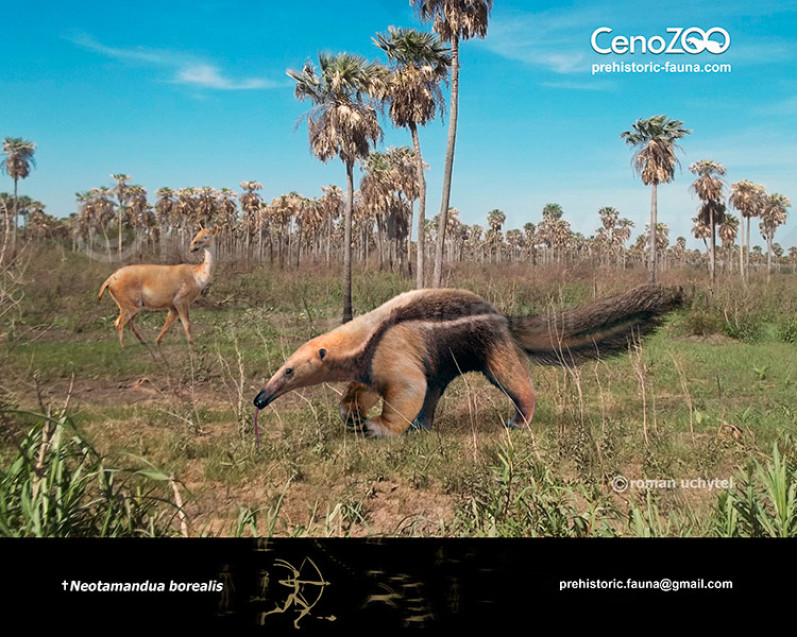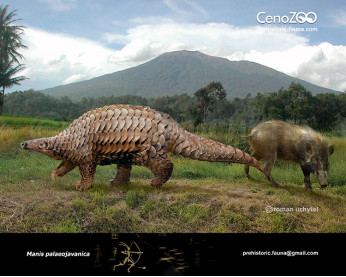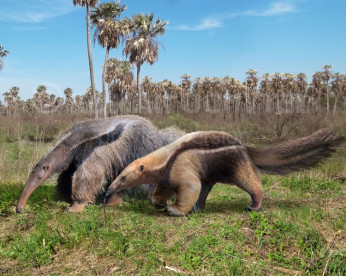Neotamandua
2841728417
Neotamandua (†Neotamandua borealis (Hirschfeld, 1976))
Order: Pilosa
Family: Myrmecophagidae
Size: 2,1 m in length, 10-70 kg of weight
Time period: Mid Miocene of South America (~13.8–11.8 Ma )
The fossil record for anteaters is generally sparse. Known fossils include the Pliocene genus Palaeomyrmidon, a close relative to the silky anteater, Protamandua, which is closer to the giant anteater and the tamanduas from the Miocene, and Neotamandua, which is believed have close affinities to Myrmecophaga. Neotamandua was larger, falling somewhere between a tamandua and a giant anteater. Neotamandua, though, is unlikely to have had a prehensile tail and its feet were similar in form to both the tamanduas and the giant anteater. It was suggested to be an ancestor of the giant anteater, and is also related to the tamanduas.
Fossils were found in the Honda Group at the Konzentrat-Lagerstätte of La Venta, Colombia. The species was described by Hirschfeld in 1976.
Neotamandua borealis foraged on social insects such as ants and termites. It was both arboreal and terrestrial.
Оплата
У Вас є кілька зручних способів купівлі зображення: кредитна чи дебетова картка Visa, Mastercard, Maestro; PayPal або банківський переказ
Neotamandua (†Neotamandua borealis (Hirschfeld, 1976))
Order: Pilosa
Family: Myrmecophagidae
Size: 2,1 m in length, 10-70 kg of weight
Time period: Mid Miocene of South America (~13.8–11.8 Ma )
The fossil record for anteaters is generally sparse. Known fossils include the Pliocene genus Palaeomyrmidon, a close relative to the silky anteater, Protamandua, which is closer to the giant anteater and the tamanduas from the Miocene, and Neotamandua, which is believed have close affinities to Myrmecophaga. Neotamandua was larger, falling somewhere between a tamandua and a giant anteater. Neotamandua, though, is unlikely to have had a prehensile tail and its feet were similar in form to both the tamanduas and the giant anteater. It was suggested to be an ancestor of the giant anteater, and is also related to the tamanduas.
Fossils were found in the Honda Group at the Konzentrat-Lagerstätte of La Venta, Colombia. The species was described by Hirschfeld in 1976.
Neotamandua borealis foraged on social insects such as ants and termites. It was both arboreal and terrestrial.


-797x638.jpg)

-70x56.jpg)

